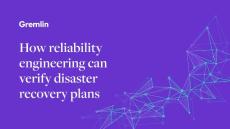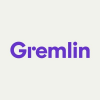|
By Andre Newman
It’s been a busy year at Gremlin! We released two new experiments, added an entirely new onboarding process and features for AWS users, added a brand new Test Suite and Detected Risks, and made many UI improvements to our web app. We beefed up our agents with more enterprise capabilities, including support for large Kubernetes clusters and systems with over 64 CPUs, improved experiment behaviors, improved dependency detection, and per-team Private Network Integrations.
|
By Andre Newman
2024 is coming to a close, and while many teams are slowing down in preparation for the holidays, we’ve been cooking up tons of new features. We’ve extended our platform support to the Istio service mesh, added a brand new experiment type for testing artificial intelligence (AI) and large language model (LLM) workloads, and made it easier to onboard Kubernetes clusters. We’ve also made our Linux and Windows agents more robust and performant.
|
By Gavin Cahill
Service meshes like Istio have become an essential way to securely and reliably distribute network traffic, especially with ephemeral, service-based architectures such as Kubernetes. However, their constantly shifting nature can interfere with targeting specific services for resilience tests. Infrastructure-based testing is designed to target specific IP addresses, allowing precision testing of applications, VMs, and nodes.
|
By Andre Newman
Note This blog uses “GPU” to refer to the entire processing circuit, including the GPU processor, video memory, and other supporting hardware. Artificial Intelligence (AI) has become one of the biggest tech trends in years. From generating full movies to updating its own code, AI is performing tasks that were once science fiction.
|
By Gavin Cahill
Disaster recovery plans have always been a crucial part of businesses—especially essential services like banks. These plans help keep your business up and running during a disaster or extreme scenario so you can be there for your customers when they need you the most.
|
By Andre Newman
Serverless platforms make it incredibly easy to deploy applications. You can take raw code, push it up to a service like AWS Lambda, and have a running application in just a few seconds. The serverless platform provider assumes responsibility for hosting and operating the platform, freeing you up to focus on your application. Naturally, this raises a question: if something goes wrong, who’s responsible?
|
By Sam Rossoff
The way the story goes is that in the old days Amazon used to cut power to data centers so they could see if their services were actually redundant across different data centers; and that they only abandoned this practice when EC2 customers started to complain (no matter how many times they were warned their instances might disappear without notice). This story may be apocryphal, but you don’t need to be worried about power loss outages in order to have a given data center go down.
|
By Andre Newman
Gremlin’s default suite of reliability tests analyzes critical functions of modern services: scalability, redundancy, and resilience to dependency failures. Services that pass this suite of tests can be trusted to remain available during unexpected incidents. But what happens when a service fails a test? How do you take failed test results and turn them into actionable insights? This blog aims to answer that question.
|
By Andre Newman
Over the past year, the Gremlin team has focused on giving you more tools to adapt Gremlin to your organization’s reliability needs. We started with customizable reliability tests, and now, we’ve released customizable role-based access controls (RBAC). We’ve also made it easier to target specific availability zones when running Failure Flags experiments, and to run experiments behind a proxy. Keep reading to learn more!
|
By Andre Newman
Kubernetes just celebrated its tenth birthday. That’s 10 years of microservices, containers, service meshes, and many other paradigms that are now common to many developers’ toolkits.
|
By Gremlin
Cloud-based distributed applications have changed how we need to approach reliability and resiliency. How do you make your applications reliable? Here’s Gremlin CEO Josh Leslie to tell you how. Today’s dynamic applications are too complex and constantly changing for humans to wrap their heads around. This means the reliability approaches that worked ten years ago simply won’t be enough. As a technology company (and these days, every company is a technology company), you need to take a different, programmatic approach to testing and improving the reliability of your applications.
|
By Gremlin
80% of failures at the infrastructure layer come from the same core gaps in reliability. Jeff Nickoloff, Gremlin Principal Engineer, goes over how Reliability Management test suites help improve reliability across your organization. Are you waiting for the other reliability shoe to drop and hoping that you actually fixed core resilience issues? Or do you know for sure that you’re resilient to common reliability issues?
|
By Gremlin
Part of the Gremlin Office Hours series: A monthly deep dive with Gremlin experts. To get the most value out of Chaos Engineering and reliability testing, you need a way to observe your service’s behavior. Observability tools offer insight into how your systems are performing, but observability on its own isn’t enough. You need a way to monitor your systems while testing their reliability so you can determine whether your service passed or failed a test.
|
By Gremlin
Unreliable software can have a painful impact on your customers and your business—something we’ve all seen and felt during high-profile outages. And while building on the cloud with AWS unlocks improved scaling and reliability capabilities, the complexity of modern distributed systems can potentially introduce outage-causing reliability risks. How can you be sure your systems are resilient to failure when they’re based on complex architecture, built by hundreds of teams, and are being updated almost constantly?
|
By Gremlin
Part of the Gremlin Office Hours series: A monthly deep dive with Gremlin experts. Serverless applications are ideal for deploying scalable applications without having to manage infrastructure. However, this also makes it difficult to test their reliability. It’s easy to simulate a network outage or latency when you have direct access to the host that your software’s running on. What do you do when you only have control over the code?
|
By Gremlin
For global financial services companies, reliability must be built-in and validated before and after shipping to production. Resilience testing is crucial for verifying the reliability of your applications under real-world conditions. But ad-hoc testing and exploratory experiments aren't sufficient: you need to run automated, standardized tests at global scale.
|
By Gremlin
Part of the Gremlin Office Hours series: A monthly deep dive with Gremlin experts. Cloud platforms make it easier than ever to deploy massively scalable, distributed workloads, but this is a double-edged sword. There are reliability challenges unique to the cloud that didn’t exist before. Failed migrations, recurring incidents, and reliability toil take their toll.
|
By Gremlin
The four Golden Signals are an easy and effective way to measure the most important aspects of a system, and when paired with a reliability management platform like Gremlin, they help you proactively meet your SLOs so you can meet your legal obligations and deliver the perfect customer experience.
|
By Gremlin
Part of the Gremlin Office Hours series: A monthly deep dive with Gremlin experts. Migrating to the cloud usually means faster deployments and easier scalability, but it also means latency. Cloud applications communicate over distributed networks, and while these networks are fast, little bits of latency can quickly add up.
|
By Gremlin
Are you testing for known reliability vulnerabilities? "Risks have different priorities, but ultimately we want to be aware of those risks. Just like we want our security team to go scan for known vulnerabilities, our reliability team should be scanning for known vulnerabilities. And those are easy things we should go address. There's a second part of it, which is kind of just good engineering testing, which is: Hey, we have a set of test cases that we know need to pass.
|
By Gremlin
Systems fail, sometimes publicly and at great cost. Airlines have experienced system-wide ticketing outages, causing hundreds of flight cancellations and significant inconvenience to customers. Retailers have experienced website crashes on the busiest shopping days of the year, costing millions in lost revenue and customer goodwill. It is vital to understand both DevOps and SRE and the roles they play in preventing such outages.
|
By Gremlin
Gremlin provides a variety of ways to test the resilience of your systems, which we call "attacks". Running different attacks lets you uncover unexpected behaviors, validate resilience mechanisms, and improve the overall reliability of your systems and services. This ebook explains each of Gremlin's attacks in complete detail, including what each attack does, how it impacts your systems, and the technical and business objectives the attack helps solve.
|
By Gremlin
Learn the basics of Chaos Engineering: discover the tools, tests, and culture needed to create better software and prevent outages and downtime. This whitepaper provides a comprehensive introduction to the discipline of Chaos Engineering including why it is more needed than ever, how to get started, and best practices to maximize learnings and reduce risk.
|
By Gremlin
By following this guide, you'll successfully increase your organization's reliability with minimal effort and risk. This document will serve as your guide to implementing Chaos Engineering and Gremlin within your organization. From educating your team on the principles of Chaos Engineering to running automated experiments, this guide will walk through each stage of the adoption process in order to ensure a smooth and successful rollout.
|
By Gremlin
Amazon DynamoDB is fast, powerful, and intended for high availability. These are all valuable attributes in a data storage solution, but to be useful as advertised, it must be configured thoughtfully. Learn how to use Chaos Engineering to ensure DynamoDB performs the way you expect. In this guide, we cover: Amazon DynamoDB is one of the most popular NoSQL databases and is the data store of choice for many teams running production workloads in AWS.
|
By Gremlin
MongoDB is designed for performance, scale, and high-availability. But, as with any software, you need to test your configuration to verify that it will work as advertised. Ensure that MongoDB performs the way you expect by using Chaos Engineering to test four key features. This guide includes four experiment tutorials to verify that MongoDB will perform reliably: In order to ensure you get the most out of MongoDB's rich features, including built-in data sharding and replication, it's crucial to test your configuration.
|
By Gremlin
Win over and convince your coworkers and management to explore and adopt Chaos Engineering and Site Reliability Engineering (SRE). The playbook provides ideas and techniques that can be used to articulate the need and benefits to internal stakeholders in your organization. It also guides the initial implementation in a way that will lead to success and growth across the organization. Implementing something new like Chaos Engineering successfully is a good way to get promoted and help the organization succeed, and this guide is here to help you.
- December 2024 (6)
- November 2024 (3)
- October 2024 (4)
- September 2024 (4)
- August 2024 (5)
- July 2024 (13)
- June 2024 (11)
- May 2024 (10)
- April 2024 (10)
- March 2024 (7)
- February 2024 (9)
- January 2024 (1)
- December 2023 (5)
- November 2023 (3)
- October 2023 (8)
- September 2023 (7)
- August 2023 (6)
- July 2023 (1)
- June 2023 (1)
- May 2023 (1)
- April 2023 (1)
- March 2023 (2)
- February 2023 (2)
- January 2023 (2)
- November 2022 (3)
- October 2022 (4)
- September 2022 (7)
- July 2022 (3)
- June 2022 (2)
- May 2022 (9)
- April 2022 (6)
- March 2022 (13)
- February 2022 (3)
- January 2022 (5)
- December 2021 (4)
- November 2021 (7)
- October 2021 (4)
- September 2021 (4)
- August 2021 (3)
- July 2021 (9)
- June 2021 (7)
- May 2021 (3)
- April 2021 (14)
- March 2021 (1)
- February 2021 (1)
- January 2021 (4)
- December 2020 (5)
- November 2020 (10)
- October 2020 (7)
- September 2020 (4)
- August 2020 (4)
- July 2020 (12)
- June 2020 (4)
- May 2020 (13)
- April 2020 (1)
Gremlin aims to make the internet more reliable and prevent costly and reputation-damaging outages. Its failure-as-a-service platform empowers engineers to build more resilient systems through safe experimentation.
Downtime is expensive and can hurt your brand. Gremlin provides engineers with the framework to safely, securely, and easily simulate real outages with an ever-growing library of attacks. Turn failure into resilience with chaos engineering.
Build resilient infrastructure:
- Resource Gremlins: Throttle CPU, Memory, I/O, and Disk.
- State Gremlins: Reboot hosts, kill processes, travel in time.
- Network Gremlins: Introduce latency, blackhole traffic, lose packets, fail DNS.
Test for application failure:
- Test for failure in your code.
- Fail or delay serverless functions.
- Narrow the impact to a single user, device, or percentage of traffic.
Avoid downtime. Use Gremlin to turn failure into resilience.


















